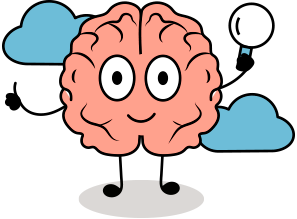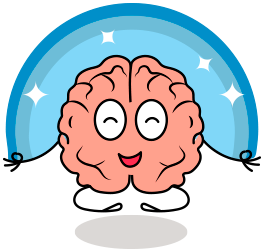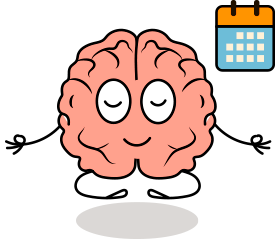Have you listened to all the hype about meditation but don’t understand it? What comes to mind is a monk sitting spaced out in a shrine or on a mountaintop all day long. Have you heard the many different views and opinions of others curious about it? But they don’t know or have any more understanding about it than you. So focused meditation is where our attention is today.
Want to learn to meditate but don’t know where to start? Some people think meditation is some whoo-hoo stuff that weird people do. However, meditating for just 5-10 minutes each day can bring more calmness and peace into your life.
Focused Meditation
There are many types of meditation, but this is a great starting place for beginners. Focused meditation brings you to the present moment by focusing on something with intent. When you focus on something and relax with solid intent, you are not thinking or worrying about anything. Give yourself a break from all the things you have to do today. Let go of all the things you have no control over now. Calming the mind allows new ideas, solutions to problems, or situations to flow.

Have you ever had one of those problems that drove you mad because you could not find an answer? Then you jump into the shower, start to relax, focus on shampooing, washing, and then Boom! You figured it out. You received a great idea, a solution to the problem that has been nagging you! That’s meditation in a sense; you step away from the everyday bullshit for 10 to 20 minutes a day; as a result, you open up space for great ideas or solutions to problems.
Focused Meditation Methods/Steps:
- Choose a time and place to meditate. Setting a time and place is essential when you commit to meditation practice. Most like to meditate first thing in the morning, even if it’s just for 10 minutes. It can make a huge difference in your day when done regularly. It truly does not matter the time; the commitment to practice each day is key to success.
Comfortable & Relaxed

- Find a comfortable position for your body; everyone is different. Sit in a chair for back support with your feet on the floor if needed. You may sit in a cross-legged position on the floor. Sitting on the floor with a back against the wall is suitable for beginners. Relaxing in a reclining chair is also lovely; make sure it’s not when you are tired, for you will fall asleep. Sitting on the floor and keeping the spine as erect as possible is good practice. Indeed it would be best if you are comfortable or will not relax enough to meditate, so find your position.
Focus:
- Breath- many find it relaxing and rejuvenating to focus on their breathing with their eyes closed. Breathe deeply and slowly, or count the breaths in and out with cycles of 10.
- Breathe in through the nose and out the mouth for a few big breaths, then return to natural breathing.
- Please pay attention to the sensations in the body when breathing, but don’t control them.
Object Focusing:
- Focus on a candle if you want your eyes open or any focal point or object that you can focus on efficiently.
- Focus on one thing at a time; sound smells; if thoughts come to mind, don’t judge them; just let them go by without following them. Instead, bring your attention back to your focal point.
Guided vs. Silent Meditation
Meditation is an ancient and timeless practice that offers many benefits. Some might be intimidated by the idea of meditating, but guided meditation can help you get started with less pressure on yourself. However, over time it becomes more difficult to meditate without any external assistance, such as music or video clips; this dependency will only increase your anxiety levels in times when there are no outside resources available for use during mediation sessions.
Silent Meditation
Silent meditation operates similarly, except silence is used instead of visual aids like one would find in a guided session. Both methods offer varying skill sets needed for dealing with stressors throughout life while supporting better mental health practices overall. Meditation brings down stress levels and learning to cope with stress healthily.
Guided Meditation
Guided meditation is better than no meditation, but it becomes a crutch, and dependence on it increases. Silent mediation, while challenging at first, allows you to meditate without any external help meaning that silent mediation also helps you get a shot of calmness in any situation.
The Master Your Mind (beginner) Meditation program gives you the best of both worlds, a guided meditation course that teaches you how to become meditative on your own. Become able to meditate anywhere, any time, no matter what life throws at you and the chaos around you.
MYM- Master Your Mind Meditation Course

Meditation is a practice with profound physical, mental, emotional, and spiritual benefits. Developing a daily meditation practice is key to these benefits and the transformation it can bring. Consistency is essential.
Some people find it challenging to build daily habits. Maybe it’s a lack of time, discipline, motivation, etc. However, I have studied habit-building science and developed all sorts of patterns throughout my life. So here are some tips that I’d like to share as they relate to creating a solid meditation practice.
(1) Start small. It’s better to start minimal, so there is no excuse for you to skip your practice. For beginners, I usually recommend starting with 5min a day and increasing by 1 minute per week. This may sound too gradual, but at the end of one year, you’ll be practicing for one h!
(2) Recommit. At the end of every session, commit to showing up for your practice the following day.
(3) Never zero. It means that every day you will practice, even if only for 5 minutes. Make it a non-negotiable part of your life.
(4) No expectations. Nothing kills motivation quicker than unmet expectations. Most of the benefits from meditation come only after months or years of daily practice. So letting go of expectations sounds like a smart strategy to me.
(5) Be prepared. Sometimes you will feel tired, busy, or “not in the mood.” Be mentally prepared to meet those challenges with the “never zero” idea, and do the practice no matter what.
(6) Joyful attitude. Meditation is not a task but a precious moment to go deep inside yourself. So enjoy the practice, and it will be easy to keep it up.
Hopefully, these tips can be helpful in your journey.
Suppose you’d like more help in building a strongly focused meditation habit. Learn how to focus, strengthen your concentration, and find the ideal technique for you. Then, I invite you to look at this beautiful meditation course for beginners, Master Your Mind.
Go ahead and click the button below for more information!

Disclosure: Bear in mind that the button link above in this post is an affiliate link, and if you make a purchase, I will earn a commission at no extra cost to you. Keep in mind that I link this company and its products because of their quality and the positive impact on people’s lives, not because of the commission I receive from your purchases at no extra cost. The decision is yours, and whether or not you decide to buy something is entirely up to you.
Resources:
Feeling Stuck? How to Increase Motivation to Reach Life Goals https://1111newme.com/2022/10/11/feeling-stuck-how-to-increase-motivation-to-reach-life-goals/
How To Completely Change Your Life https://1111newme.com/2022/10/10/how-to-completely-change-your-life-your-best-possible-future/
More resources:

